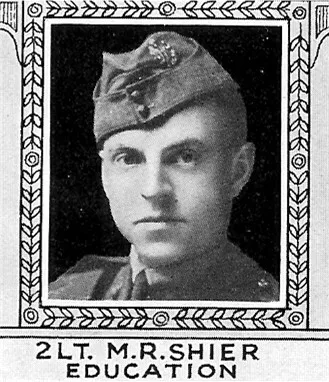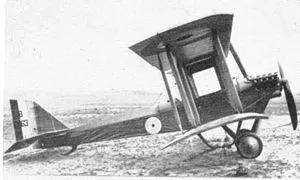Shier, Morley Roy
Missing in Action 1918-09-06


Birth Date: unkown date
Born:
Mr. and Mrs. James M. Shier
Home: Uxbridge, Ontario.
Enlistment:
Enlistment Date: Unknown
Service
RAF
Unit
256 Seahouses Sqn- Squadron (RAF)
Base
Rank
Second-Lieutenant
Position
Second-Lieutenant
Service Numbers
Home
 Uxbridge, Ontario.
Uxbridge, Ontario.
First Burial
 Hollybrook Memorial, Hollybrook, Hampshire, Uk
Hollybrook Memorial, Hollybrook, Hampshire, Uk
Airco (pre de Havilland) DH 6

The Airco DH.6 was a British military trainer biplane used by the Royal Flying Corps during the First World War. Known by various nicknames, including the "Clutching Hand" and "Skyhook", many survived to be used as a civil light aircraft in the postwar era.
The DH.6 was specifically designed as a military trainer, at a time when it was usual for obsolete service types to be used in this role. Geoffrey de Havilland seems to have had two design criteria in mind. The first was that it should be inexpensive and easy to build, and above all, simple to repair after the mishaps common in training units. The top and bottom wings were square-cut and interchangeable, hence roundels often located in unusual positions. They were heavily cambered, and braced with cables rather than streamlined wires. On the original version of the type there was no stagger. Even the fin and rudder, on the prototype of the usual curved de Havilland outline, were cut square on production machines. The fuselage structure was a straight box with no attempt at refinement of outline "“ instructor and pupil sat in tandem on basketwork seats in a single cockpit, spartan even by the standards of the time. The standard engine was the readily available 90 hp (67 kW) RAF 1a. Because of its use in the B.E.2 the engine was familiar to RFC mechanics. No cowling was used, and upswept straight exhaust pipes were fitted. When stocks of the RAF 1a ran short, other engines were fitted, including the 80 hp (60 kW) Renault.
The second design criterion was that the new trainer should be relatively safe to fly, both for the student and his instructor. RFC instructors at the time referred to student pilots as "Huns" (the term normally applied to German airmen) and casualties at training schools were high. To improve safety the instructor could decouple the student's controls to avoid having to wrestle with him. The new trainer's flying characteristics were selected to achieve the desired safety. De Havilland had carried out extensive research into stability and control in aircraft while with the Royal Aircraft Factory, which helped in designing a safe but deliberately unstable aircraft. As a result, the DH.6 had very gentle flying characteristics and was probably the most "forgiving" aircraft of its time, allowing itself to be flown "crab wise" in improperly banked turns and able to maintain sustained flight at speeds as low as 30 miles per hour (48 km/h).
In fact, the DH.6 was described as "too safe" to make a good trainer, as its reaction to inexpert piloting was too gentle to prepare pilots for combat aircraft such as the Sopwith Camel, whose handling was unusually difficult even for the era. With its low power, strong construction and lack of streamlining, its maximum speed was very low.Wikipedia
 Canadian Virtual War Memorial
Canadian Virtual War Memorial Wikipedia DH-6
Wikipedia DH-6